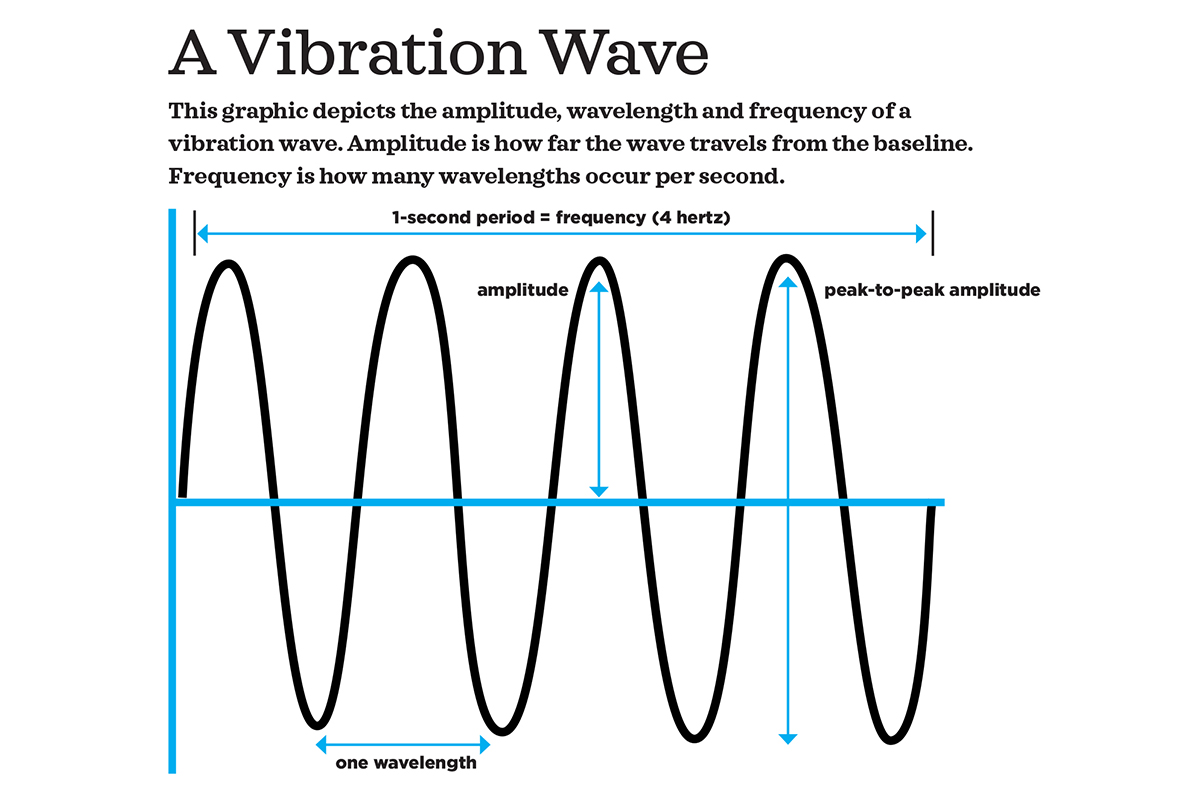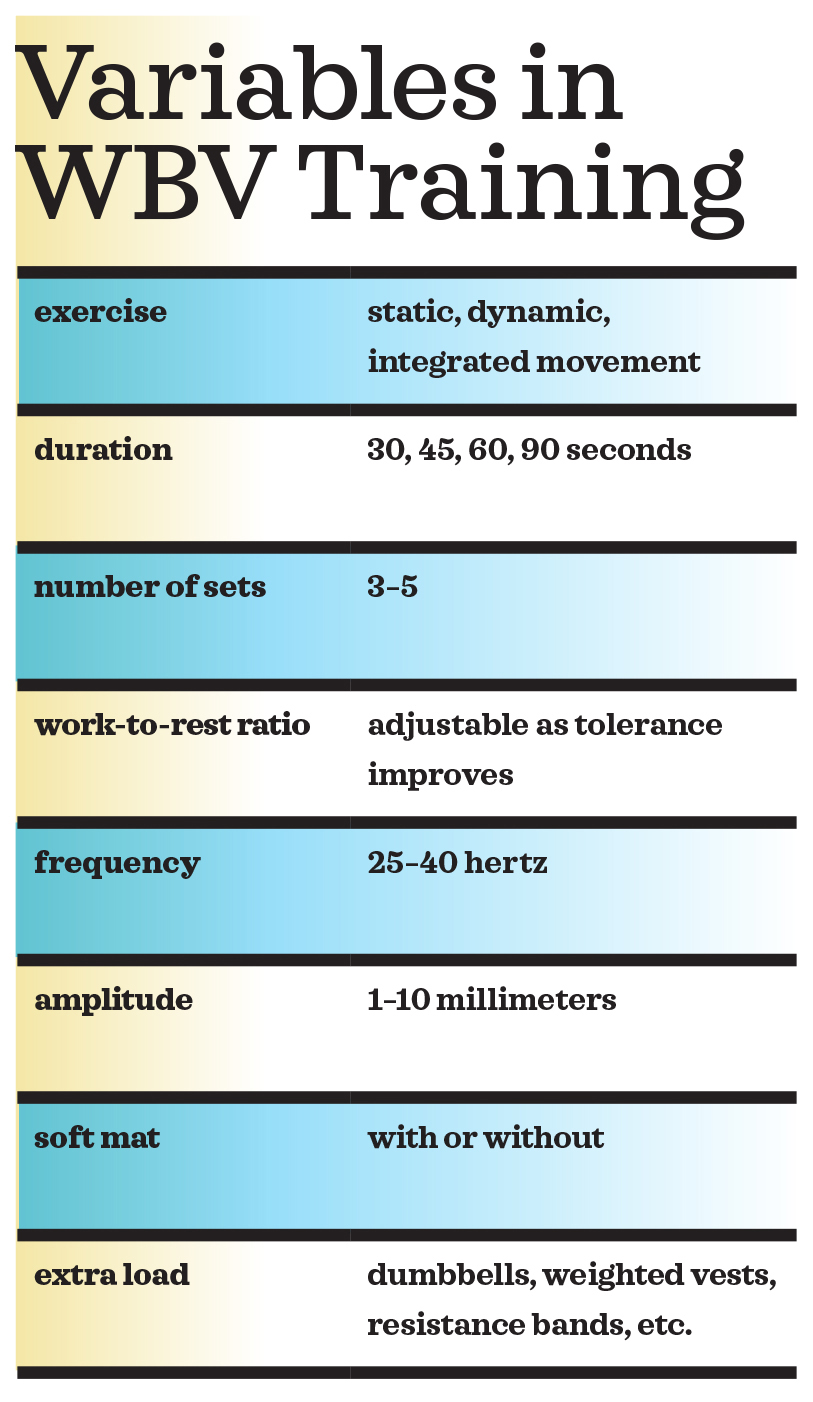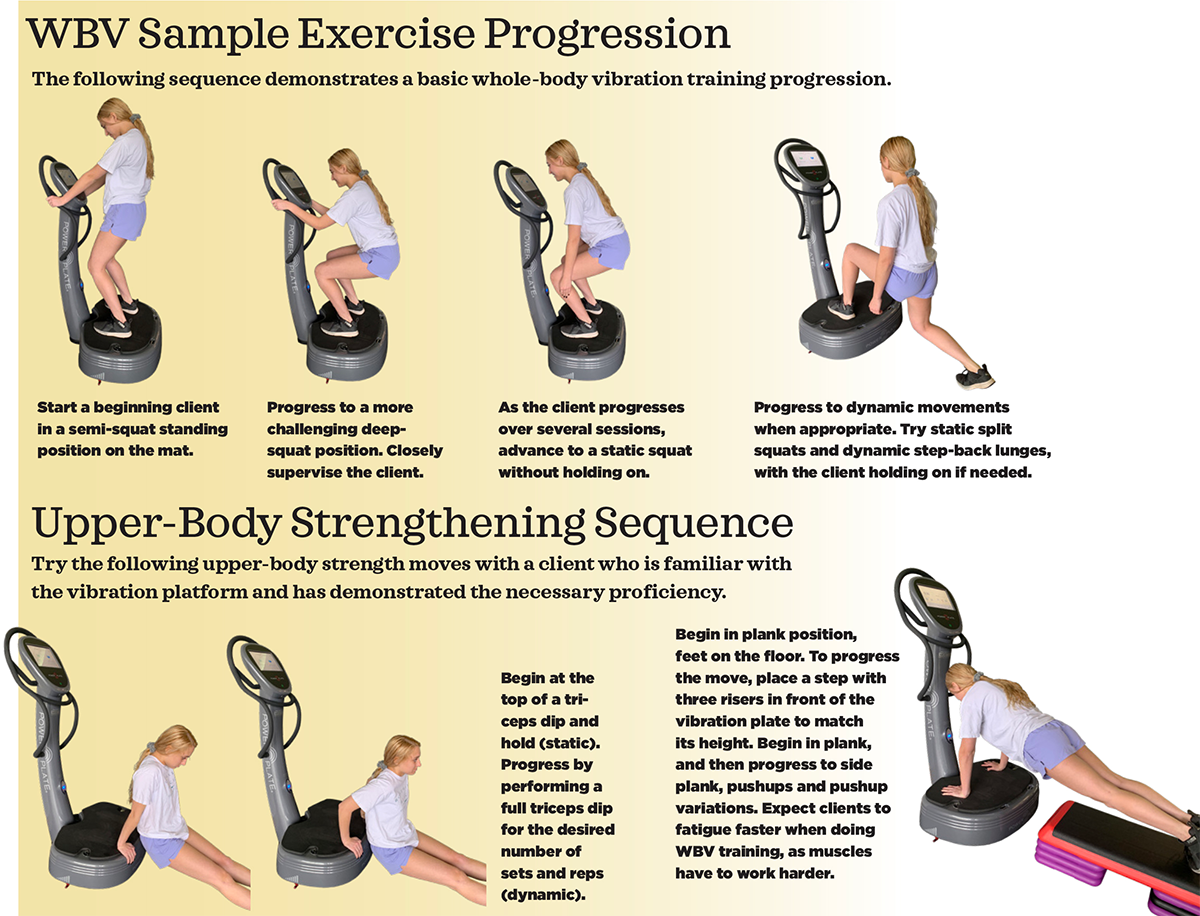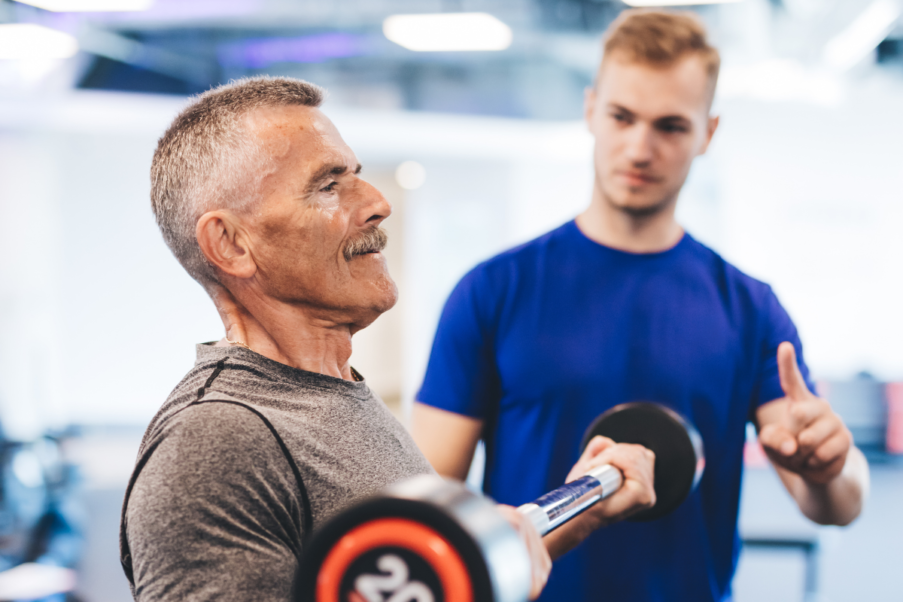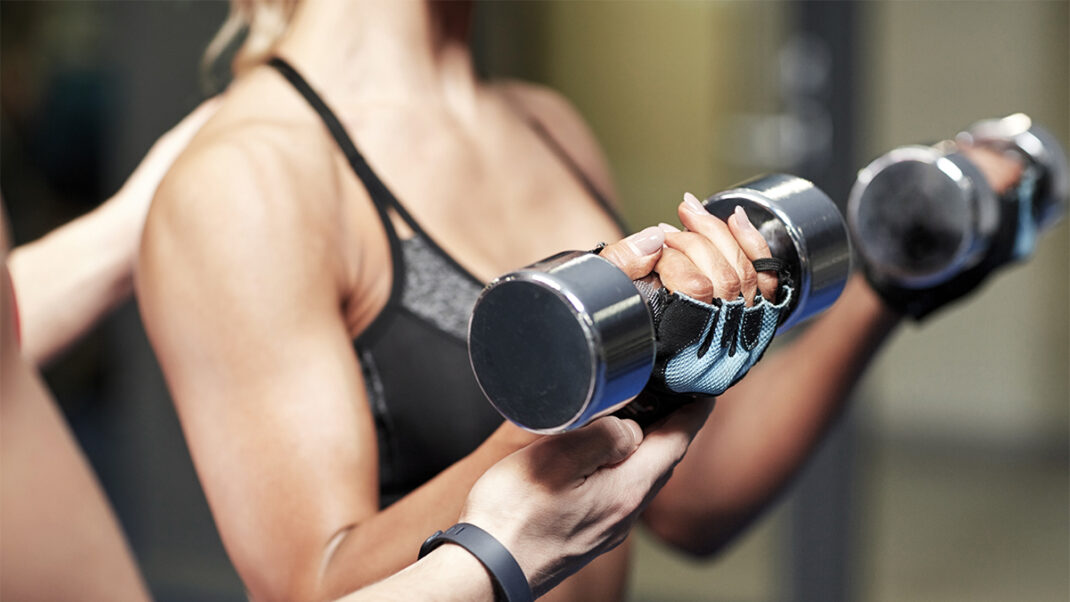Whole-Body Vibration Training: Ride the Wave
Shake up your programming and introduce clients to a different, effective method that will help them reach their goals.
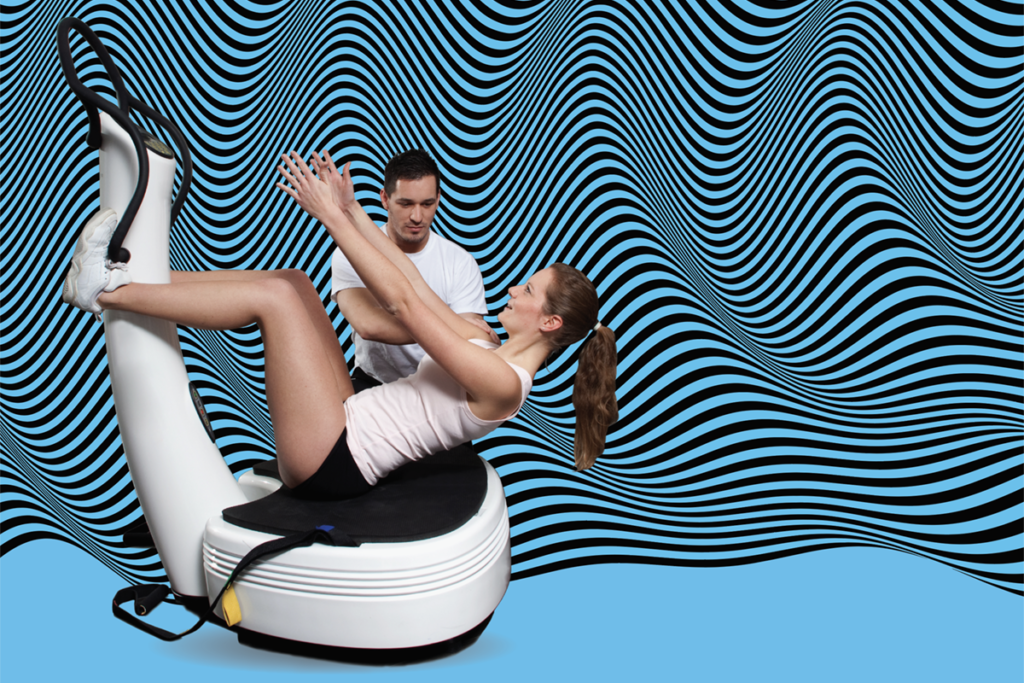
Editor’s Note: This article has been edited to update the science and clarify some specifics regarding whole body vibration since it appeared originally in the print edition of the July-August 2020 issue of Fitness Journal. The changes do not impact or alter the CEC questions and answers. The reference list also has been updated and a list of recommended readings has been added.
If you’ve ever watched vintage video footage of people using vibrating belt machines and thought, “Well, that’s silly,” you may want to think again about the merits of this seemingly passive exercise. Especially with modern vibrating platform machines being much more sophisticated in design than their predecessors, it turns out there actually is benefit to all that jiggling.
Vibration waves are all around us, and they’re an integral part of how we see, hear, walk and live. Over the past decade, the fitness industry has embraced vibration training as a way to gain strength, boost metabolism, improve performance and enhance recovery. What’s got everyone so shaken? This article reviews the basics of vibration training, explores relevant research and provides practical programming ideas.
History of Vibration Training
Simply defined, vibration is movement around a fixed point. It is “the oscillating, reciprocating, or other periodic motion of a rigid or elastic body or medium forced from a position or state of equilibrium” (dictionary.com) and is characterized by the vibration’s amplitude, the distance the vibration wave travels from its equilibrium point, and by its frequency, how many wave cycles occur during a unit of time (Provot et al. 2019). Amplitude is measured in millimeters, and frequency in hertz.
When muscles encounter vibration, they contract. The Russian space program used this concept in the 1970s after scientists developed a method of delivering whole-body vibration (WBV) as a way for cosmonauts to exercise during space travel (Paiva et al. 2019). However, vibration was used therapeutically long before that. The effects of environmental vibrations caught the attention of French neurologist Jean-Martin Charcot in the 1880s when he noted that riding in a train or on a horse improved tremors in patients with Parkinson’s disease (Saggini & Ancona 2017). In an effort to treat these tremors, Charcot built a vibrating chair to mimic the effects of travel. Half a century later, researchers placed bedridden patients in an oscillating hospital bed and found they recovered their bone and muscle strength more quickly than patients who remained in regular beds (Toscani et al. 1949).
Today, WBV is delivered via a platform, and there are generally three types: vertical platforms vibrate up and down; oscillating platforms rotate around a central axis; and synchronous platforms move vertically, laterally and front to back in a sequential manner.
Vertical and synchronous platforms provide uniform vibration, while the edges of an oscillating platform—being farther from the axis of rotation—experience larger-amplitude vibrations. Most commercial WBV platforms are adjustable and can produce vibrations within a frequency of 15–60 hertz and with an amplitude of less than 1 millimeter up to 10 mm (Saggini & Ancona 2017).
Effects of Vibration on the Body
What occurs in the body when it is exposed to vibration? The motion triggers mechanoreceptors, sensory nerves found in almost all body tissues. When mechanoreceptors detect a vibration, they activate the tonic vibration reflex, which stimulates involuntary muscle contractions (Paiva et al. 2019). The reason we don’t bounce around like cartoon characters is because body tissues dampen vibration. Muscles do this best by contracting, and joints do it best by bending.
Think about standing in a boat when the water is choppy. If you allow your muscles to relax and become soft, you’ll feel every wave and get thrown about like a ragdoll. However, if you tighten your core and bend your hips and knees to brace your feet against the bottom of the boat, you’ll more easily withstand the swells and troughs. Your muscles will contract as often as needed to match the input and decrease the movement felt by the body. The greater the vibration’s frequency, the more often the muscles will contract.
During a strong contraction, muscles vibrate within a frequency of 10–50 hertz (Cardinale & Wakeling 2005). Since vibration platforms oscillate at a frequency similar to this, WBV can cause significantly strong contractions, thus stimulating muscle activation through reflex activity, as well as through the body’s natural desire to dampen the vibrations and experience the movement more comfortably.
Muscle contractions triggered by WBV require a surge in energy expenditure and oxygen uptake (Marín et al. 2019). Researchers found that “the synergistic effect of WBV and active squatting with a moderate load [20% of body weight] is as effective at increasing VO2 as doubling the external load during squatting without WBV” (Serravite et al. 2013).
This means that people who can’t tolerate high levels of exercise—such as sedentary and elderly persons and those with obesity—can reap the benefits of physical activity without as much effort. That sounds promising, but what does the research say about this and other areas of fitness programming?
Jiggle Off the Pounds?
While standing on a vibration platform burns more calories than static standing on the ground, the vibrating plate is not a magical weight-loss platform. A 15-minute, static-pose session burns only around 14.2 kilocalories (Cristi-Montero, Cuevas & Collado 2013). Thus, a standard cardiovascular exercise program is likely to be more effective at revving up the metabolism.
Improved muscle mass also increases the caloric needs of the body at rest, making muscle hypertrophy an important part of a weight loss strategy. The amount of WBV exposure required to increase muscle mass remains in question. Since muscle growth requires some strain, stationary standing on the platform at low frequency and amplitude, without doing additional exercises, likely does not contribute much to building muscle. A caveat: For people who are sedentary and obese, 15 minutes of vibration in various positions may be such a significant amount of new activity that they start to build muscle. Sedentary postmenopausal women with obesity who performed static poses during WBV at a high frequency and amplitude (50 hertz and 4 mm, respectively) twice per week showed increases in strength and muscle size (Cristi-Montero, Cuevas & Collado 2013). >>
Combining WBV and resistance training also improves muscle mass more than resistance training alone (Cristi-Montero, Cuevas & Collado 2013). Zago et al. (2018) found that when people with obesity used WBV training in conjunction with resistance or body-weight exercises for at least 10 weeks, they experienced 5%–10% reductions in body mass index, fat mass and weight. In addition, a review study revealed that WBV appeared to increase bone mineral density, lean body mass, leg strength, cardiovascular function and resistance to falling in persons with obesity (Zago et al. 2018). However, one would expect these same benefits from any formal exercise program, so it’s difficult to say what significance WBV played in the outcomes.
In another study, rats exposed to WBV were unable to form new fat cells. Human subjects, on the other hand, demonstrated the same result only when WBV was combined with calorie restriction and exercise (Cristi-Montero, Cuevas & Collado 2013). Again, these strategies are effective in reducing fat mass without the addition of WBV.
Furthermore, the best WBV protocol for weight loss is hard to determine, as almost every experiment involving persons with obesity has used different settings for frequency, amplitude, time and activity. Not only that, but researchers measure different outcomes (e.g., BMI, weight, lean muscle). It seems clear, though, that for people starting an exercise program when they are sedentary and obese, WBV can be a good way to increase activity with less effort and strain, since exercise duration is short and range of movement is limited. In addition, the novelty of using the device may improve buy-in with clients.
Let’s take a look at how WBV is studied and applied among other populations.
See also: The 3D Booty: Training the Glutes for Form and Function
Vibration Training and Older Adults
As people age, they lose muscle mass in a process known as sarcopenia. This muscle wasting begins as early as age 45 and decreases strength and balance (Lachance et al. 2012). Resistance training combats sarcopenia, but older individuals often shun exercise because of arthritic joint pain and lack of conditioning.
While WBV equipment is imposing in its size and technology, older individuals tend to gravitate toward it because of the promise of a big return for little effort. Static standing on the vibration plate is easy on arthritic joints and may decrease circulating inflammatory markers in people who are elderly. In addition, WBV is fairly well tolerated by those at low fitness levels and, with consistent use, can improve cardiac function and aerobic fitness (Pessoa et al. 2019). There is also evidence that WBV positively improves lower-body strength and cardiovascular function in previously sedentary postmenopausal women (Tapp & Signorile 2014; Figueroa et al. 2014). Researchers saw positive changes in this population when they used a WBV program two to three times per week for no more than 30 minutes per session for a minimum of 3 months (Pessoa et al. 2019).
Furthermore, training with WBV appears to increase walking speed, balance, flexibility and postural reactions in the elderly population (Pessoa et al. 2019). These critical skills diminish as people age, contributing significantly to falls, which can be devastating to the health of older adults. Lachance et al. (2012) reported that 30% of those over age 65 suffer at least one fall per year. Half of them never return to a level of walking that allows them to care for themselves.
Many older individuals also suffer from osteoporosis or osteopenia. This decline in bone mineral density (BMD) puts them at greater risk for spine and hip fractures as a result of a fall. Vibration training improves lumbar-spine BMD in postmenopausal and older women (up to age 74) and enhances femoral-neck BMD in the women younger than 65 (Marín-Cascales et al. 2018). This younger subset of the postmenopausal population also showed improvement in femoral-neck BMD with WBV training. The improvement, however, required a large number of WBV sessions (more than 108) at a frequency of more than 20 hertz and an amplitude of 5 mm or greater.
Athletes and WBV
Do athletes benefit from adding WBV to their training? Again, results are mixed, as methodologies have varied among studies addressing the effect of WBV on performance. The performance marker most often measured is the change in jump height immediately after WBV exposure in the static-squat or semi-squat position. There is some evidence that women show more positive changes than men in post-WBV jump performance (Bazette-Jones et al. 2008).
The modest boost in jump performance seen after WBV is likely due to post-activation potentiation (PAP), which primes a muscle for activity after a previous movement (Marín et al. 2019). Once muscles become activated, they contract more readily. This is why the second set of an exercise is usually easier than the first one. A brief session of WBV prepares muscles for the next activity; one study found that adding a load equal to 30% of body weight to vibration training further improved post-WBV countermovement jump performance, sprint times and agility in male college football players (Pojskic et al. 2015).
A dynamic warmup also harnesses the power of PAP; however, WBV hasn’t been proven to be a better warmup for performance than dynamic training (Dabbs et al. 2012). Plus, any acute improvements after a WBV session are short-lived, lasting no more than 30 minutes (de Hoyo Lora et al. 2010). It therefore seems impractical for most athletes to utilize WBV as a warmup strategy. Chronic effects of expanded WBV training on athletic performance proved no better (Hortobágyi et al. 2015). Athletes are better off sticking to tried-and-true training methods if better performance is the goal.
On the other hand, some athletes do use WBV to help with postworkout recovery. Like massage, WBV decreases delayed-onset muscle soreness (DOMS). While there’s little consensus regarding the parameters and settings for this use, WBV does seem to increase tissue oxygenation, decrease creatine kinase levels and lower the perception of DOMS (Manimmanakom et al. 2015; Timon et al. 2016).
Of note: Platform settings for recovery may differ from those for strength training. Subjects who received WBV for 1 minute on an oscillating vibrating platform after eccentric exercise at settings of 12 hertz and 4 mm reported less DOMS (Timon et al. 2016). This low-frequency, high-amplitude setting differs from the high-frequency, lower-amplitude guideline for strength-building. Following exercise, participants in this study performed three sets of standing in a static semi-squat for 1 minute, followed by 30 seconds of rest. Other recovery strategies include lying on the machine for a direct massage or using a foam roller on the vibrating platform for an enhanced deep-tissue effect.
Medical Guidelines and Considerations
There are contraindications to consider with all forms of exercise. Therefore, it is advisable to clear individuals for weight bearing, strength and cardiorespiratory exercise before they experience whole body vibration. For cases in which clients have acute disease, physical limitations or injuries, medical clearance is absolutely required. Keep in mind that it is not the exercise intervention or equipment selection that are contraindicated; rather, it comes down to the professional’s skill and grasp of how and when to use the equipment/intervention for a specific client’s condition or injury.
For example, if a client recently had ACL surgery and was not cleared for weight-bearing strength and cardio (unsupervised by medical professional) then WBV should not be started yet. However, this also depends on the client’s status of recovery and the experience of the practitioner. A 2008 study (Moezy, Olyaei, Hadian, et al.) showed positive interventions using WBV in ACL reconstruction. Not only did WBV significantly improve postural stability when compared to conventional training, there were measurable improvements in all knee repositions with no negative outcomes. The researchers concluded WBV was a useful intervention to expedite rehabilitation after ACLR, based on the study group.
In addition, reductions in muscle atrophy and weakness have been observed in WBV participants posoperatively, who also reported feeling stronger with less pain (Bastian, Franz & Klinik 2014). A 2013 clinical study that followed 48 patients post-ACL surgery concluded WBV gave subjects better postural control and muscle performance with the intervention administered as early as one month postoperatively, without without compromising knee ROM and stability (Fu, C.L.A. et al.).
The critical factor in each outcome was that the practitioner was skilled and qualified in applying WBV training and therapy. As ever, when in doubt, refer out or consult with a colleague who is experienced using WBV before working with a client who is not apparently healthy or who is recovering from surgery or injury.
Protocol Ideas for Beginners and Athletes

Vibration training can be an effective tool for athletes and beginners.
Vibration training is an effective tool for beginners. Until clients acclimate, always start them at the lowest frequency and amplitude settings for short 30-second bursts. WBV may be unsettling for some, while others may immediately love it. Joint flexion dampens perceived vibration, so cue clients to flex their ankles and knees to decrease the amount of vibration felt in the head (usually the most sensitive area).
- Start clients with a static exercise, such as a basic squat.
- Have them stand on the optional soft mat, hold onto the device’s handles and slightly bend their knees. If they panic when the vibration starts, instruct them to bend their knees more than 40 degrees, as if sitting in a chair. This lets them discover that their body position can regulate the amount of vibration they feel, giving them a sense of control.
- Once clients tolerate three to four sets of static exercise for several sessions, advance them to something more dynamic, such as an active squat, for three sets of 30 seconds each.
- Next, still with clients on the mat, and keeping frequency and amplitude low, add an integrated movement, such as a single-leg squat with a step-back lunge, for three sets of 30 seconds.
- Do not change any variables until clients can perform integrated movements on the platform under the current conditions. When ready, increase exercise duration first. Increase the time for each set in 15-second increments, up to 90 seconds per set, and then increase the number of sets performed.
- As clients become stronger, shorten the work-to-rest ratio, then remove the mat. Only then should you increase the frequency, in increments of 5 hertz. At this point, decrease duration until clients have acclimated to the change in frequency, as increasing amplitude adds a new challenge.
- When clients are ready, challenge them by adding external loads or integrated resistance activities. The wide range of variable combinations makes WBV an engaging activity that can hold a client’s interest over many sessions.
- Athletes or other fit individuals may advance through protocols more quickly than the sedentary population. Try some of the following ideas one-on-one, in group classes or in small-group training.
- To increase the challenge of any move, add resistance bands or free weights. Most vibration plate models include attachable static bands for isometric holds. Engage the muscles by pulling on the straps and holding the position.
- Offer WBV classes in which you use the vibration platform like the step in step classes. Adding vibration to the step format may increase heart rate, metabolism and strength. Change WBV variables for variety and challenge.
- Integrate the vibrating platform into a HIIT or circuit program to keep heart rates up during strength maneuvers.
- Since athletes gain recovery benefits from WBV in as little as 3 minutes after exercise (Timon et al. 2016), try static semi-squats at a low frequency and high amplitude in three 1-minute increments. This may reduce DOMS after heavy exercise.
- Use a foam roller on the vibrating platform to further enhance the massage-like benefits of postexercise WBV.
See also: Self-Care Through Massage
A Worthwhile Method
While WBV is not a magic carpet ride to weight loss and superior performance, research and plenty of practical field experience have shown that, under the right circumstances and with the proper applied knowledge and attention to variables, the method offers numerous benefits. With proper training, fitness pros can feel safe and positive about using WBV with a wide range of clients who have different goals.
References
Bastian, J.D., Franz, W. & Klinik, L. 2014. Whole body vibration expedites and improves recovery of anterior cruciate ligament rupture and subsequent arthroscopic reconstructive surgery. Deutsche Zeitschrift für Sportmedizin, 56 (7/8), 228.
Bazett-Jones, D.M., et al. 2008. Comparing the effects of various whole-body vibration accelerations on counter-movement jump performance. Journal of Sports Science & Medicine, 7 (1), 144–50.
Cardinale, M., & Wakeling, J. 2005. Whole body vibration exercise: Are vibrations good for you? British Journal of Sports Medicine, 39 (9), 585–89.
Cristi-Montero, C., Cuevas, M.J., & Collado, P.S. 2013. Whole-body vibration training as complement to programs aimed at weight loss. Nutricion Hospitalaria, 28 (5), 1365–71.
Dabbs, N.C., et al. 2012. A brief review: Using whole-body vibration to increase acute power and vertical jump performance. Strength and Conditioning Journal, 34 (5), 78–84.
da Cunha de Sá-Caputo, D., et al. 2019. Undesirable and unpleasant adverse side effects of the whole body vibration exercises. In R. Taiar et al. (Eds.), Whole Body Vibrations Physical and Biological Effects on the Human Body (1st ed., pp. 231–46). Boca Raton, FL: Taylor & Francis Group.
de Hoyo Lora, M., et al. 2010. Whole body vibration: Acute and residual effect on the explosive strength. Journal of Human Sport and Exercise, 5 (2), 188–95.
Figueroa, A., et al. 2014. Effects of whole-body vibration exercise training on aortic wave reflection and muscle strength in postmenopausal women with prehypertension and hypertension. Journal of Human Hypertension, 28, 118–22.
Fu, C.L.A., et al. 2013. The effect of early whole-body vibration therapy on neuromuscular control after anterior cruciate ligament reconstruction: a randomized controlled trial. ,The American Journal of Sports Medicine, 41 (4), 804-14.
Hortobágyi, T., et al. 2015. Small and inconsistent effects of whole body vibration on athletic performance: A systemic review and meta-analysis. European Journal of Applied Physiology, 115 (8), 1605–25.
Lachance, C., et al. 2012. Is whole-body vibration beneficial for seniors? European Review of Aging and Physical Activity, 9, 51–62.
Manimmanakom, N., et al. 2015. Effect of whole-body vibration therapy on performance recovery. International Journal of Sports Physiology and Performance, 10 (3), 388–95.
Marín, P.J., et al. 2019. Effect of mechanical vibration on performance. In R. Taiar et al. (Eds.), Whole Body Vibrations Physical and Biological Effects on the Human Body (1st ed., p. 83). Boca Raton, FL: Taylor & Francis Group.
Marín-Cascales, E., et al. 2018. Whole-body vibration training and bone health in postmenopausal women. Medicine, 97 (34), e11918.
Moezy, Olyaei, Hadian, et al. 2008. A comparative study of whole body vibration training and conventional training on kneee proprioception and postural stability after anterior cruciate ligament reconstruction.
British Journal of Sports Medicine, retrieved September 1, 2020: doi:10.1136/bjsm.2007.038554
Paiva, D.N., et al. 2019. Effects of whole body vibration in patients with chronic obstructive lung disease. In R. Taiar, et al. (Eds.), Whole Body Vibrations Physical and Biological Effects on the Human Body (1st ed., p. 135). Boca Raton, FL: Taylor & Francis Group.
Pessoa, M.F., et al. 2019. Effects of whole body vibration on the elderly. In R. Taiar, et al. (Eds.), Whole Body Vibrations Physical and Biological Effects on the Human Body (1st edition, pp. 103–09). Boca Raton, FL: Taylor & Francis Group.
Pojskic, H., et al. 2015. Acute effects of loaded whole body vibration training on performance. Asian Journal of Sports Medicine, 6 (1), e24054.
Provot, T., Serra, R., & Crequy, S. 2019. Instrumentation for mechanical vibration analysis. In R. Taiar et al. (Eds.), Whole Body Vibrations Physical and Biological Effects on the Human Body (1st ed., p. 2). Boca Raton, FL: Taylor & Francis Group.
Saggini, R., & Ancona, E. 2017. The applied mechanical vibration as whole-body and focal vibration. In R. Saggini (Ed.), The Mechanical Vibration: Therapeutic Effects and Applications (1st ed., pp. 25–88). Sharjah, UAE: Bentham Science Publishers.
Serravite, D.H., et al. 2013. Loading and concurrent synchronous whole-body vibration interaction increases oxygen consumption during resistance exercise. Journal of Sports Science & Medicine, 12 (3), 475–80.
Tapp, L.R., & Signorile, J.F. 2014. Efficacy of WBV as a modality for inducing changes in body composition, aerobic fitness, and muscular strength: A pilot study. Clinical Interventions in Aging, 9, 63–72.
Timon, R., et al. 2016. Effects of whole-body vibration after eccentric exercise on muscle soreness and muscle strength recovery. The Journal of Physical Therapy Science, 28 (6), 1781–85.
Toscani, V., et al. 1949. Modification of the effects of immobilization upon metabolic and physiologic functions of normal men by the use of an oscillating bed. The American Journal of Medicine, 6 (6), 684–711.
Zago, M., et al. 2018. Whole-body vibration training in obese subjects: A systematic review. PLOS ONE, 13 (9), 8–12.
